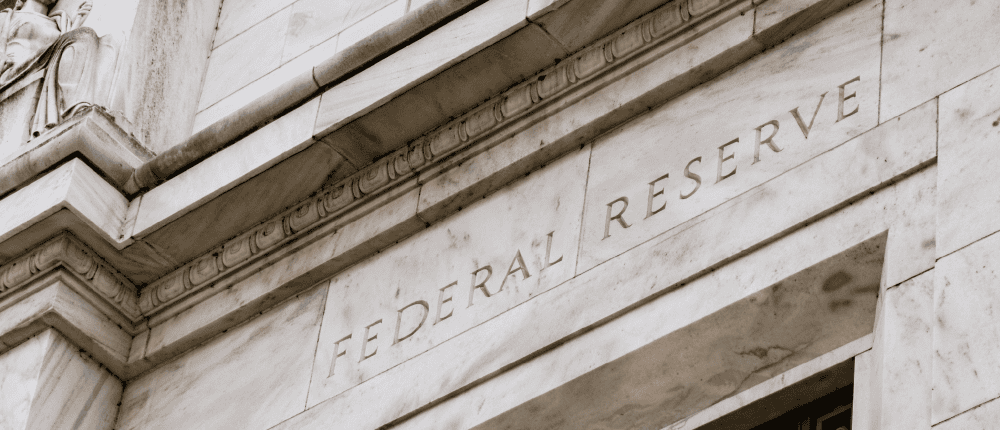The Federal Reserve System was created by Congress in 1913 to exert greater control over America’s central banking system. The Federal Reserve, simply known as “The Fed”, controls the country’s supply of money to effectively promote maximum employment, price stability, and moderate long-term interest rates for the U.S. economy. In its simplest form, the Fed raises interest rates to cool inflation and economic activity while conversely lowering interest rates to promote growth and maximum employment.
The Fed is also called upon to alleviate financial crises, the most recent stemming from the COVID-19 pandemic that triggered the largest global recession since the Great Depression during the 1930s. To stimulate economic growth and foster full employment, the Fed took drastic measures such as anchoring short-term interest rates near 0% for almost two years and expanding the money supply by several trillion dollars by actively buying Treasury and mortgage-backed securities in the open market to reside on the Fed’s balance sheet.
Progress towards combating COVID-19, combined with the Fed’s highly stimulative actions led to a rapid rebound of economic activity in 2021. The U.S. economy grew nearly 6% last year, far stronger than the 2% growth trend observed from 2010-2019. In addition, the unemployment rate that peaked at nearly 15% in the spring of 2020, now resides comfortably below 4%. From this narrow perspective, the Fed has every right to take a victory lap. There’s just one problem: like a long-forgotten nemesis reaching out from the grave, inflation has come home to haunt the Fed in a major way.
In a cruel twist of fate, the Fed had been more troubled by deflation than inflation in wake of the 2007 global financial crisis. After years of falling short of reaching its 2% inflation target, the Fed stated in 2020 that it would welcome inflation above its stated goal to make up for past issues on the downside. As the global economy snapped back to life in 2021, these past failures may have played a role in the Fed’s assessment that rising inflation was transitory in nature, likely to dissipate as global supply chains sprung back to life. Unfortunately for the Fed, inflation is now sitting at a 40-year high, thus its transitory call looks wildly off base.
In hindsight it’s easy to be critical of the Fed, but in its defense, when operating in real time, there was no real precedent for handling a global pandemic. Although the Federal Reserve is a venerable institution, its forecasts are no more prescient than that of other leading pundit’s. However, it’s the Fed’s power and influence over the economy and financial conditions that truly sets it apart. And while it’s good advice to not fight the Fed, there are limits to what even the Fed can do to stabilize markets.
The law of supply and demand is central to any economic discussion, and over the past two years massive monetary and fiscal stimuli have led aggregate demand to far outweigh limited supply. Simply stated, there is too much money competing for too few goods and services, the basis for inflation. The Fed can curb demand by raising interest rates and shrinking the money supply, effectively driving the cost of money higher. The housing market is a prime example of an industry that is poised to cool, with demand dwindling now that 30-year mortgage rates are nearly twice as high as they were at the start of 2022.
As you might have guessed, it’s on the supply side where the Fed’s influence wanes. Energy prices have skyrocketed this year, directly impacted by Russia’s invasion of Ukraine and the related fallout on global energy reserves. China’s “zero COVID” lock-down measures continue to hamper the world’s second largest economy, further impacting the healing of the global supply chain. These are two significant examples where the Fed has little, if any, influence, or power to resolve global economic matters though U.S. monetary policy.
This is not to say the Fed can’t win the war against inflation, but at what cost? If the labor market begins to crack and/or the U.S. economy dips into a recession in the face of rising rates, will the Fed relent? Or will tighter monetary policy curb demand enough to guide the economy into a soft landing where growth moderates while inflation trends lower? For now, the Fed remains adamant that getting inflation under control is its primary concern, a pre-condition to meeting its full employment objective. As such, the market fully anticipates additional rate hikes and the continued run-off of the Fed’s balance sheet this year.
Despite the weight of evidence supporting the market’s opinion, prudent investors must take caution in wedding to any one viewpoint. Over the past year we have seen transitory inflation become rampant; the Fed projecting limited rate hikes in 2022 only to turn and execute a 0.75% rate hike in June – its largest in nearly three decades, and a red-hot-economy that now looks suddenly susceptible to a recession. The Fed continues to dance as fast as it can to keep up with the music. For investors, the facts can change quickly leading one to second guess themselves, often to the detriment of their returns. It’s best to leave forecasting to the Fed and stick to your long-term plan. Choose not to dance, as slow and steady progress towards your investment goals often makes far more sense in a topsy-turvy world.
Written By:

Neil Waud, CFA®
Chief Investment Officer
Public Trust Advisors, LLC



